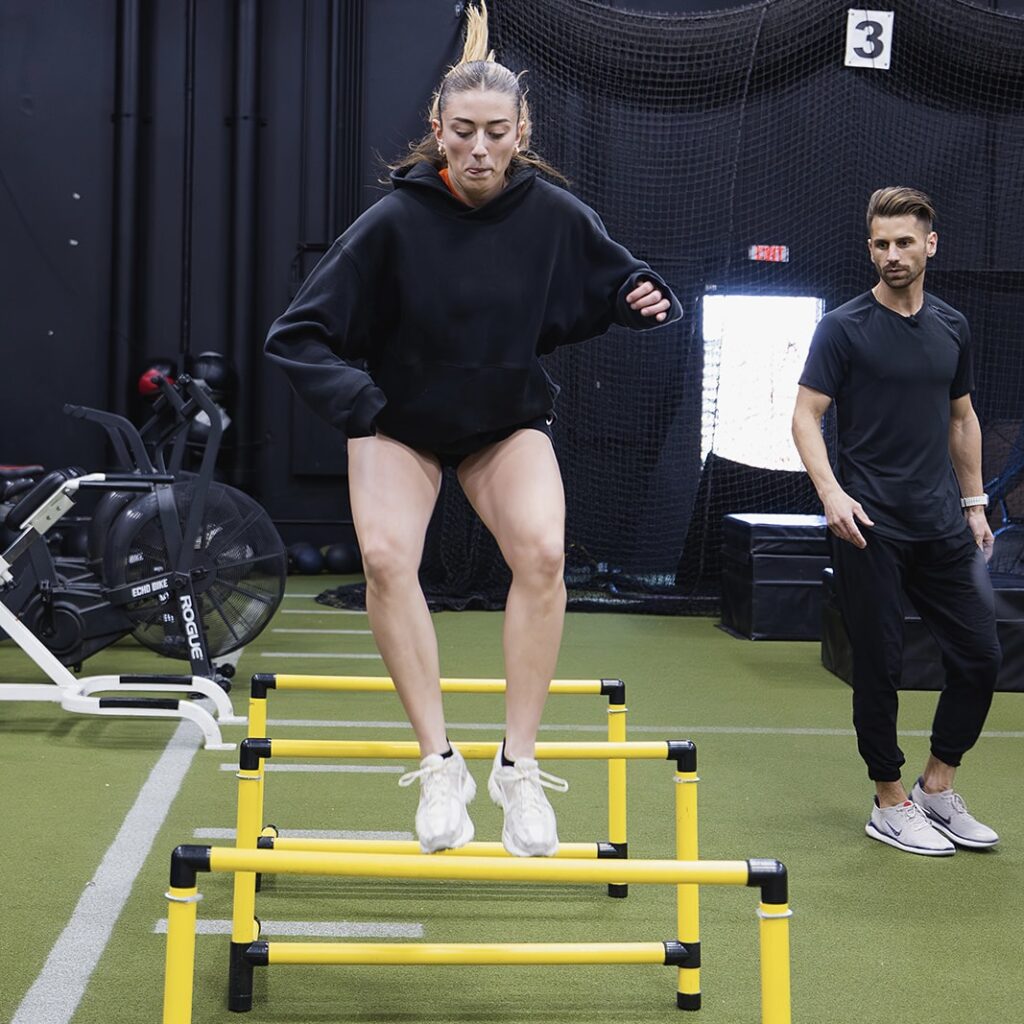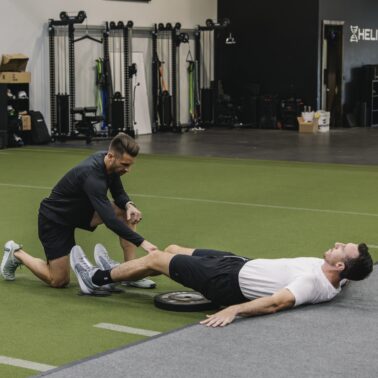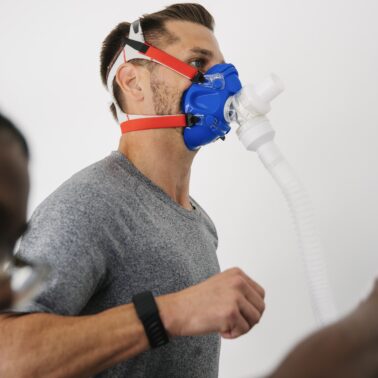Approximate Read Time: 11 minutes
“Progress isn’t linear. Undulating periodization embraces that truth—using daily and weekly waves of stress to keep adaptation alive.”
What You Will Learn
- Why the body slows adaptation under traditional linear training models.
- The science and data proving undulating periodization’s effectiveness for strength and performance.
- How to apply undulating periodization through the 3P Framework—Principles, Process, Plans.
The Plateau Problem
Every athlete eventually hits a wall. The invisible ceiling where effort no longer equals improvement. Early in training, progress is linear—each session brings measurable gains. More load, more power, more growth. Then, one day, the line flattens. Despite increasing effort, strength stalls, power plateaus, and fatigue accumulates. The body, remarkable in its ability to adapt, has fully adapted to the routine itself.
Traditional linear periodization, the classic model of gradually increasing intensity and decreasing volume, has long been a cornerstone of strength and conditioning. For beginners, it’s a reliable approach that builds a solid foundation. But for seasoned athletes or those managing long competitive calendars, its predictability becomes its downfall. The nervous system grows complacent when exposed to repetitive stimuli, and biological systems that once thrived on novelty become resistant to further change.
Undulating periodization emerged to solve this problem. It’s not about working harder but working smarter—manipulating training stress to keep the body alert and adaptive. Rather than climbing in a straight line, the athlete progresses through waves—some heavy, some light, some fast, others slow—all synchronized to maintain momentum when others plateau.
The Physiology of Adaptation
Adaptation is the body’s storytelling mechanism. Every rep, sprint, and jump writes a neural and muscular narrative about what the body must prepare for next. The central nervous system, muscles, and metabolic pathways communicate through stress and recovery cycles. When the same type of stress is applied repeatedly, that dialogue goes silent. The brain and body stop “listening” because they’ve already mastered the task.
Undulating periodization reintroduces uncertainty into this system. By alternating load, volume, and speed on a daily or weekly basis, the body is forced to constantly recalibrate. Heavy days trigger high-threshold motor units and neural recruitment. Moderate days reinforce endurance and metabolic conditioning. Power-focused days teach the nervous system to fire efficiently under dynamic conditions. The constant fluctuation keeps all pathways alert without overwhelming any single one. It’s structured chaos—controlled variation that prevents both stagnation and overtraining.
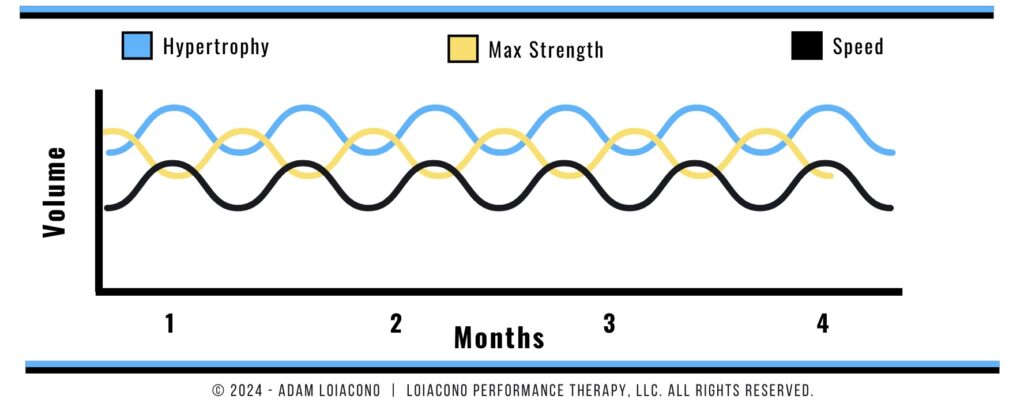
What Is Undulating Periodization?
Undulating periodization, also known as nonlinear periodization, is a programming model that alternates training intensity and volume within short timeframes. Instead of following a gradual, month-long progression like linear periodization, undulating programs shift the focus multiple times within a week. For example, Monday might target hypertrophy with moderate loads and high repetitions, Wednesday might prioritize maximal strength with heavy sets of five, and Friday might emphasize power with lower loads moved explosively.
| Model | Volume Trend | Intensity Trend | Primary Strength Focus | Adaptation Pattern |
|---|---|---|---|---|
| Linear | ↓ Volume | ↑ Intensity | Predictable, one-directional | Peaks then plateaus |
| Block | Focused per phase | Variable by block | Sequential (strength → power) | Peaking for single event |
| Microdosing | Constant low dose | Variable | Maintenance or recovery | High frequency, low fatigue |
| Undulating | Fluctuates daily/weekly | Fluctuates daily/weekly | Multiple qualities simultaneously | Continuous adaptation |
Each of these sessions applies a unique stress to the neuromuscular system. Over time, this constant variety keeps the athlete’s adaptation curve steep. Unlike purely linear models that produce a single performance peak, undulating training fosters multiple micro-peaks across the training year. It’s a model designed for real athletes living in real environments—athletes balancing travel, fatigue, competition, and recovery.
In comparison, linear and block models focus on sequential phases. They develop one quality at a time, such as hypertrophy or maximal strength, before moving on to the next. Undulating training blends them, ensuring that strength, power, and endurance coexist and evolve together. This flexibility makes it especially effective for team sports and year-round competition schedules, where athletes must maintain multiple qualities simultaneously.
The Research Behind the Waves
The science behind undulating periodization (UP) is both deep and consistent. In one of the foundational studies on the topic, Rhea and colleagues (2002) compared 12 weeks of linear periodization (LP) versus daily undulating periodization among recreationally trained men. Both groups performed identical total volumes and intensities, but the undulating group varied the rep scheme each day.
| Exercise | Linear Periodization | Daily Undulating | Δ Improvement |
|---|---|---|---|
| Bench Press 1RM | +14.4 % | +28.8 % | +14.4 % advantage |
| Leg Press 1RM | +25.7 % | +55.8 % | +30.1 % advantage |
The results were striking: the undulating group improved their bench press by 28.8 percent and leg press by 55.8 percent, while the linear group improved by only 14.4 and 25.7 percent, respectively (p < 0.05). Even with equal workloads, simply changing the order and frequency of stimuli produced nearly double the strength gain.
A decade later, Williams et al. (2017) conducted a meta-analysis pooling 81 effect sizes from 18 studies and over 600 participants. The analysis revealed that periodized training consistently outperformed non-periodized approaches for maximal strength (effect size 0.43, p < 0.001), with undulating models showing the strongest advantage for trained individuals. Their data also showed that longer study durations led to greater improvements—proof that the benefits of undulation compound over time.
| Model Compared | Mean Effect Size (1RM) | Outcome |
|---|---|---|
| Non-periodized vs Periodized | 0.43 [0.27–0.58] ↑ | Periodized > Non-periodized |
| Linear vs Undulating | 0.51 β advantage for UP (p = 0.001) | UP > LP |
| Study Length | Positive (β = 0.03 per week) | Longer = greater gain |
More recently, Moesgaard and colleagues (2022) confirmed that when training volume is matched, undulating models still produce slightly superior one-repetition maximum improvements (3–5 percent higher) in trained athletes compared to linear models, while both produce equivalent hypertrophy.
Similarly, Bartolomei et al. (2014) compared block and traditional (undulating-style) programming in elite strength athletes. Over 15 weeks, the block group achieved greater upper-body power, but both models yielded similar strength gains. This highlights an important nuance: undulating periodization isn’t just a strength method—it’s a versatile system adaptable to different performance priorities.
The collective message from these findings is clear. Variation is the critical ingredient in long-term performance. Undulating periodization doesn’t outperform other models because it’s exotic—it does so because it keeps the biological conversation alive.
Why Undulation Works
Undulating periodization works for both physiological and psychological reasons. Physiologically, alternating loads prevent the body from desensitizing to a single training stimulus. Neural drive, motor unit recruitment, and muscle coordination stay high because the nervous system never fully settles into a pattern. Light days facilitate active recovery, heavy days push maximal force capacity, and moderate days bridge the two by reinforcing technique under manageable fatigue. Here are 4 key points of why this model works:
- Neuromuscular freshness: Frequent load variation prevents desensitization of motor units.
- Stress-recovery balance: Heavy days build strength; lighter or speed days promote neural recovery.
- Hormonal and enzymatic diversity: Different intensities stimulate different endocrine and metabolic pathways, maintaining responsiveness.
- Engagement: Variety sustains motivation. The monotony of repeating identical workouts is one of the quietest performance killers.
Psychologically, undulation offers novelty without chaos. Athletes often equate progress with change; repeating the same sessions week after week can erode motivation and focus. Undulating structures deliver that novelty within a predictable rhythm. It’s enough variation to stay engaging and enough structure to feel purposeful. In essence, it harmonizes biology and behavior.
Comparing Periodization Models
Each model of periodization has a place. Linear periodization works exceptionally well for beginners and during early rehabilitation phases, where steady, predictable loading builds foundational capacity. Block periodization excels in off-season training when athletes can dedicate uninterrupted time to one physical quality, such as hypertrophy or maximal strength. Microdosing models—short, frequent, low-dose sessions—shine during congested competitive schedules, allowing maintenance of fitness with minimal fatigue.
| Model | Best Used When… | Key Advantages | Limitations |
|---|---|---|---|
| Linear | Foundational phases, early rehab | Simple, predictable progress | Plateaus quickly, low variety |
| Block | Focused off-season development | Deep adaptation in one quality | May cause detraining in others |
| Microdosing | In-season or recovery phases | Low fatigue, high frequency | Limited stimulus magnitude |
| Undulating | Advanced training & in-season load management | Continuous adaptation across qualities | Requires precise monitoring of load |
Undulating periodization, however, thrives when the goal is balance. It allows athletes to train multiple systems concurrently without overexposing any single one. Unlike the rigid progression of linear models or the single-focus isolation of block training, undulation mirrors the complexity of sport itself—where demands fluctuate daily, and readiness must adapt in real time. Its inherent flexibility makes it especially compatible with data-driven programming and modern load management technologies.
For performance therapists and strength coaches alike, undulating programming offers a built-in safeguard against monotony. It inherently adjusts to fluctuating readiness, workload spikes, and recovery cycles, making it an elegant solution for long-term athlete development.
Undulating Periodization in Practice
Off-Season Strength Block
A professional soccer player targeting eccentric strength and power:
| Day | Focus | Load / Reps | Goal |
|---|---|---|---|
| Mon | Hypertrophy | 70 % 1RM · 3×10 | Tissue capacity |
| Wed | Max Strength | 85 % 1RM · 5×5 | Force production |
| Fri | Power | 60 % 1RM · 6×3 (VBT monitored) | Speed of force |
Over four weeks, the order rotates to start with power first—another layer of variation.
In-Season Maintenance
High-frequency athletes (e.g., NWSL players) may use a weekly undulating microcycle: heavy → light → speed → recovery. This structure maintains strength without adding fatigue.
Rehab and Return to Play
In performance therapy, undulation prevents monotony in loading. A post-ACL athlete might alternate:
- Day 1: Bilateral HSR (heavy slow resistance)
- Day 2: Tempo lunges with metabolic stress
- Day 3: Velocity work or low-amplitude plyometrics
The variable stress pattern balances tendon remodeling and nervous system recovery— mirroring the safe-to-fail experiment mindset from the 3P Model.
Integration with the 3P Framework
The 3P Model—Principles, Process, and Plans—provides the philosophical scaffolding for undulating training.
Principles remind us that adaptation thrives on variability. The body isn’t built for monotony. By changing the planes of motion, velocity, or tempo while maintaining consistent intent, we reinforce proficiency before chasing power.
Process transforms that principle into practice. Undulating training is a continual experiment. Each week provides new data points on how an athlete tolerates load. Test, retest, and refine. Success isn’t measured by maximal lifts but by measurable improvements in movement quality, efficiency, and output under varied conditions.
Plans are where this comes to life. Coaches must control what they can—the load, rest, and readiness—and manipulate one variable at a time. The goal is to amplify desirable adaptations, like improved bar velocity or joint efficiency, and dampen undesirable ones such as excessive fatigue or compensation. When executed through the 3P lens, undulating periodization becomes not just a program but a process of discovery.
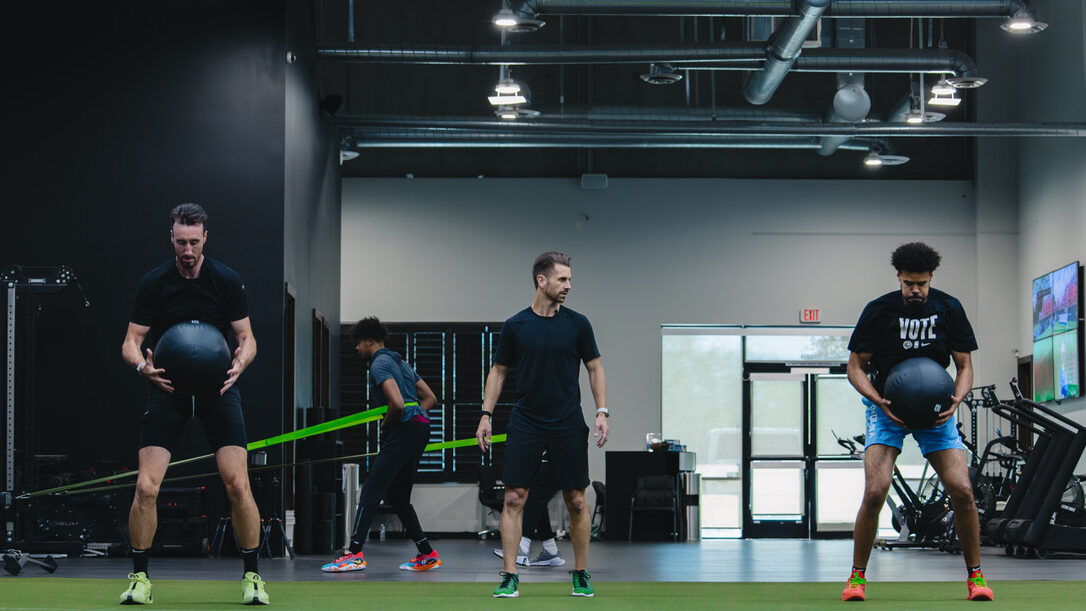
The Takeaways
Undulating periodization redefines what it means to “progress.” It reframes training not as a straight climb but as a rhythm—waves of stress and recovery that keep adaptation alive. It respects physiology’s need for variation and psychology’s need for engagement. The science is unequivocal: frequent fluctuations in load and intensity produce more consistent long-term strength gains than monotonous progressions.
For practitioners, the message is simple. Variation prevents stagnation. Research supports the waves. Volume alone does not guarantee adaptation; frequency, fluctuation, and feedback do. Undulation isn’t a trend—it’s the natural language of performance.
- Change the input, not the intent. Same goals, different stresses.
- Alternate intensity. High-load and velocity days complement, not compete.
- Respect recovery. Easy days fuel the hard ones.
- Track trends, not single sessions. Weekly test–retest beats daily max testing.
- Keep it playful. Novelty sustains the athlete’s nervous system and motivation alike.
Free Download
Read More Like This
Related Podcasts
References
- Rhea MR et al. A Comparison of Linear and Daily Undulating Periodized Programs with Equated Volume and Intensity for Strength. J Strength Cond Res. 2002;16(2):250–255.
- Bartolomei S et al. A Comparison of Traditional and Block Periodized Strength Training Programs in Trained Athletes. J Strength Cond Res. 2014;28(4):990–997.
- Williams TD et al. Comparison of Periodized and Non-Periodized Resistance Training on Maximal Strength: A Meta-Analysis. Sports Med. 2017;47:2083–2100.
- Moesgaard L et al. Effects of Periodization on Strength and Muscle Hypertrophy in Volume-Equated Programs. Sports Med. 2022;52:1647–1666.
